Introduction
In the rapidly evolving landscape of cloud computing, effective cost management has emerged as a pivotal concern for organizations striving to optimize their technological investments. With a staggering percentage of cloud budgets being wasted—up to 47% in some cases—companies are increasingly recognizing the necessity of implementing strategic cost optimization practices.
This article delves into the essential concepts of cloud cost management, offering insights into practical strategies that can significantly enhance resource utilization and financial oversight. By understanding the intricacies of cloud pricing models and leveraging advanced cost management tools, IT professionals can not only mitigate unnecessary expenditures but also align their cloud strategies with broader business objectives.
As the demand for cloud services continues to surge, the importance of robust governance and monitoring practices cannot be overstated, positioning organizations to thrive in a competitive market.
Understanding Cloud Cost Optimization: Key Concepts and Importance
Optimizing cloud cost efficiency in the digital environment is an essential process focused on efficiently handling and regulating expenditures while enhancing the value obtained from online services. Recent discoveries emphasize that:
- 75% of enterprises report a rise in waste related to online services.
- Some assessments suggest that waste could represent as much as 47% of their budget for these services.
This emphasizes the urgent need for organizations to adopt systematic practices that:
- Identify expenditure drivers
- Optimize resource utilization
- Implement sound budgeting strategies
to achieve cloud cost efficiency.
Grasping the fundamental concepts of pricing models—such as pay-as-you-go, reserved instances, and spot instances—is essential for making informed decisions that align with overarching business objectives. The substantial expansion of Google Cloud's IaaS service, which rose by 63.7% from 2020 to 2021, demonstrates the competitive dynamics in the digital services market and underscores the importance of cloud cost efficiency in expense optimization strategies. The significance of managing expenses for achieving cloud cost efficiency cannot be overstated; without proper oversight, organizations risk incurring substantial expenditures that lead to budget overruns, adversely impacting profitability and project viability.
As noted by Veeam,
The online storage plays a crucial role in today’s data protection strategy, according to half of the surveyed businesses.
Consequently, IT specialists must emphasize cloud cost efficiency as a strategy to improve operational efficiency and ensure sustainable growth in an increasingly competitive environment. This strategic focus not only enhances financial well-being but also enables organizations to utilize technological advancements more effectively, ultimately supporting their profitability.
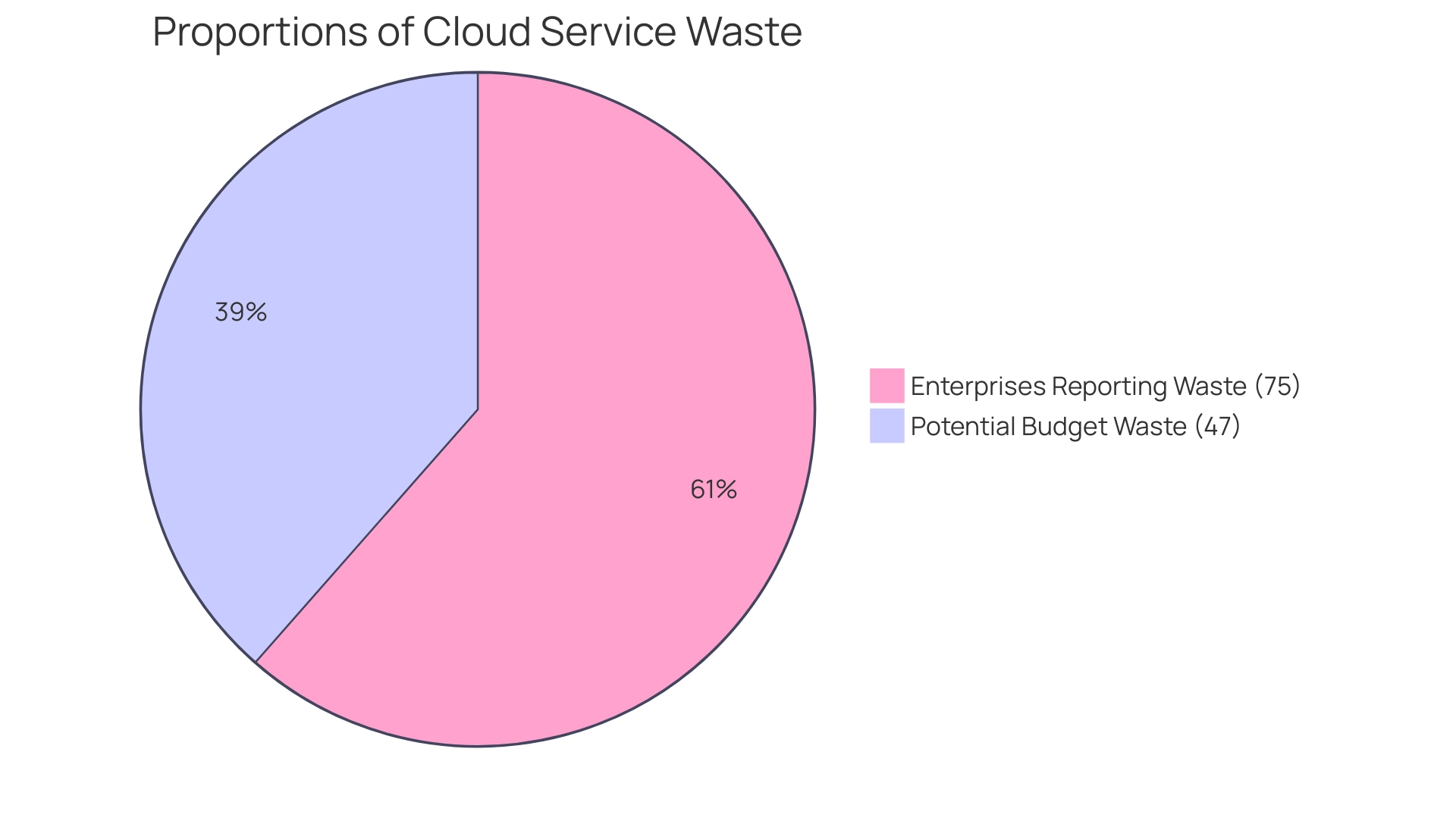
Practical Strategies for Effective Cloud Cost Management
-
Implement Tagging and Resource Allocation: Utilizing tagging to classify and track resources by department, project, or budget center is vital for attaining improved visibility and responsibility. This practice not only streamlines resource management but also significantly enhances cloud cost efficiency, making it easier to track expenditures and optimize budgets. In fact, a recent Deloitte survey revealed that 36% of commercial real estate executives prioritize digital investments, demonstrating a broader trend toward effective resource allocation in various industries. Moreover, with half of surveyed businesses viewing online computing as a modern data protection strategy, the significance of strategic investments in this area is further underscored.
-
Utilize Cost Management Tools: Leveraging both built-in cost management tools from service providers and third-party solutions is critical for monitoring usage, forecasting costs, and analyzing spending patterns. Tools such as AWS Cost Explorer and Azure Cost Management offer invaluable insights, enabling organizations to make informed decisions regarding their expenditures. As emphasized by industry observations, businesses that effectively incorporated these tools, such as Applause with CloudZero, achieved a significant 23% decrease in spending on online resources.
-
Review and Optimize Resource Usage: Regular audits of online resources are imperative to identify underutilized or idle instances. By rightsizing resources based on actual workload demands and exploring scalable options, entities can avoid overprovisioning and ensure their infrastructure achieves cloud cost efficiency while maintaining effectiveness. This proactive assessment is in line with the best practices anticipated in 2024, where entities are increasingly concentrating on enhancing resource utilization.
-
Set Budgets and Alerts: Creating budgets for online services and implementing notifications to inform teams as they near financial limits is a proactive approach that can greatly reduce unforeseen expenses. This disciplined method encourages a culture of responsible usage among teams, ensuring that spending remains aligned with the entity’s overall financial objectives.
-
Consider Alternative Pricing Models: Assessing alternative pricing structures, such as reserved instances, savings plans, or spot instances, can lead to substantial financial savings over standard pay-as-you-go pricing. Grasping the flexibility of your workload can direct choices regarding which pricing model will be most advantageous for your organization.
By methodically applying these strategies, IT experts can significantly enhance their organization's cloud cost efficiency, ensuring that technology investments yield optimal returns while supporting broader business goals. As Cody Slingerland notes,
Combined, these two regions account for 82% of the world’s computing <— a reminder of how effective management not only optimizes costs but also plays a crucial role in the global landscape of computing.
For those interested in a deeper dive, the Statista survey results are available for download, providing further insights into investment trends in the technology sector.
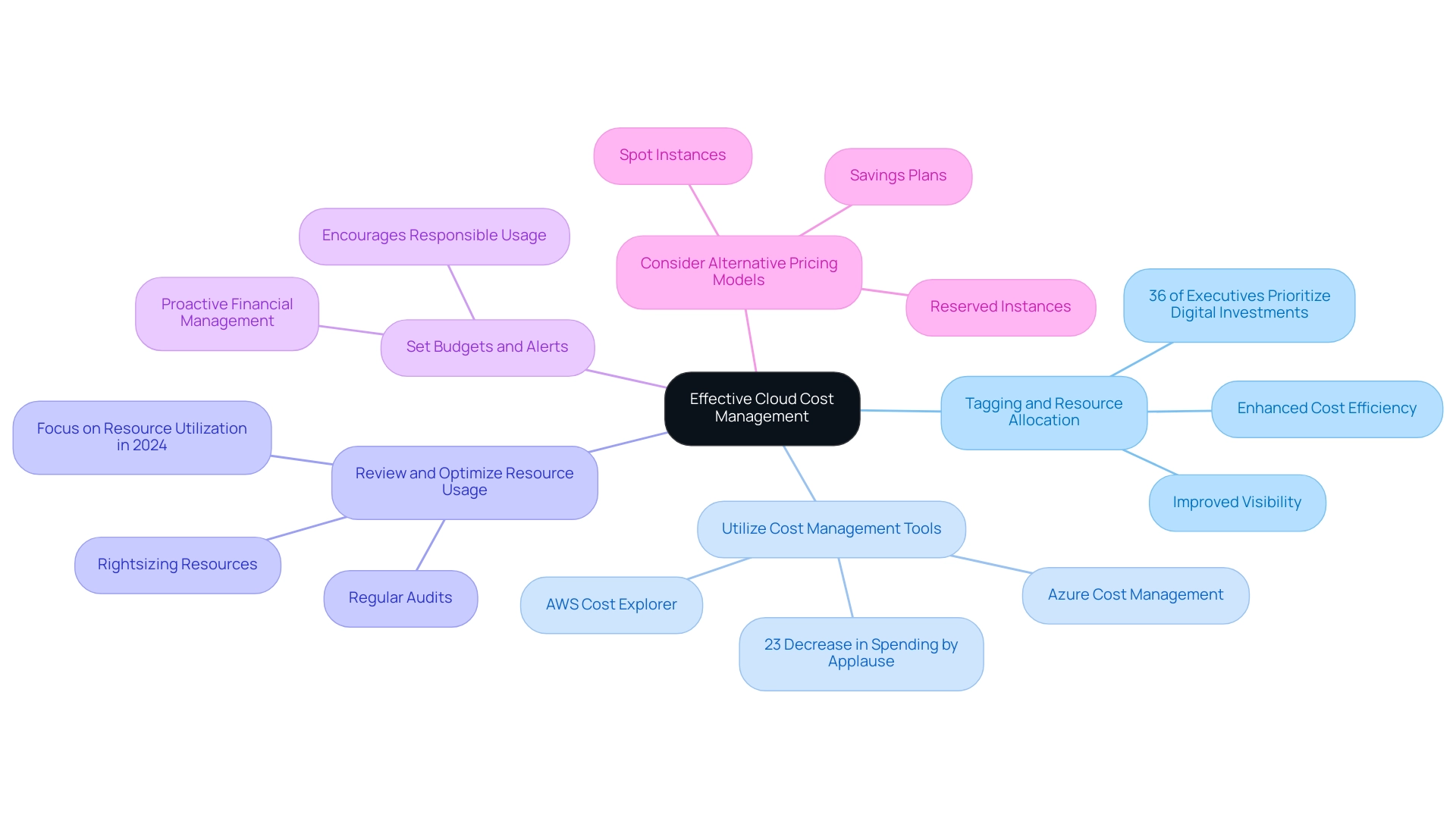
Monitoring and Analyzing Cloud Spending
To effectively monitor and analyze cloud spending, IT professionals should consider the following strategies:
-
Establish a Baseline: Analyzing historical usage data is crucial for setting a baseline of anticipated expenses. This fundamental step allows organizations to identify variations in expenditure patterns, which is crucial as forecasts suggest that by 2025, 50% of information will be stored online, up from just 25% in 2015. Furthermore, the rising quantity of smartphones expected to hit around 7,743.6 billion by 2028 highlights the increasing necessity for online services and the need for cloud cost efficiency in expense management.
-
Leverage Analytics Tools: Utilizing advanced analytics tools can significantly enhance visibility into spending trends, allowing for categorization of costs and identification of departments or projects that contribute most to expenses. Numerous service providers offer built-in tools intended for this purpose, simplifying the process for entities to monitor their investments in the virtual environment.
-
Conduct Regular Reviews: Establishing a schedule for monthly or quarterly assessments of expenses with key stakeholders is vital. These discussions facilitate the analysis of trends, enable the examination of discrepancies, and allow for timely adjustments in strategy. Given the swift advancement of online computing as a business essential, regular assessments guarantee that companies maintain cloud cost efficiency while staying competitive and aligned with their financial objectives.
-
Automate Reporting: Creating automated reporting systems for online resources enables teams to remain updated about their usage and expenses in real-time. This proactive method enables entities to catch unexpected charges early and fosters a culture of accountability.
By consistently tracking spending on services, organizations can gain valuable insights that inform budgeting and resource allocation decisions, ultimately driving improved cloud cost efficiency in their expenses. As observed by Sid Nag, Vice President Analyst at Gartner, Organizations implementing a multicloud adoption model are also increasing expenditure on infrastructure and platform services (CIPS). This trend emphasizes the necessity of robust cost management strategies for online storage to ensure cloud cost efficiency, as more than 60% of corporate data is now stored in this environment.
This trend raises critical concerns regarding security, as highlighted in the case study titled 'Data Storage Trends,' which reveals the importance of robust security measures in online environments. As computing continues to evolve into a business necessity, it becomes imperative for organizations to implement efficient operating models to ensure competitiveness.
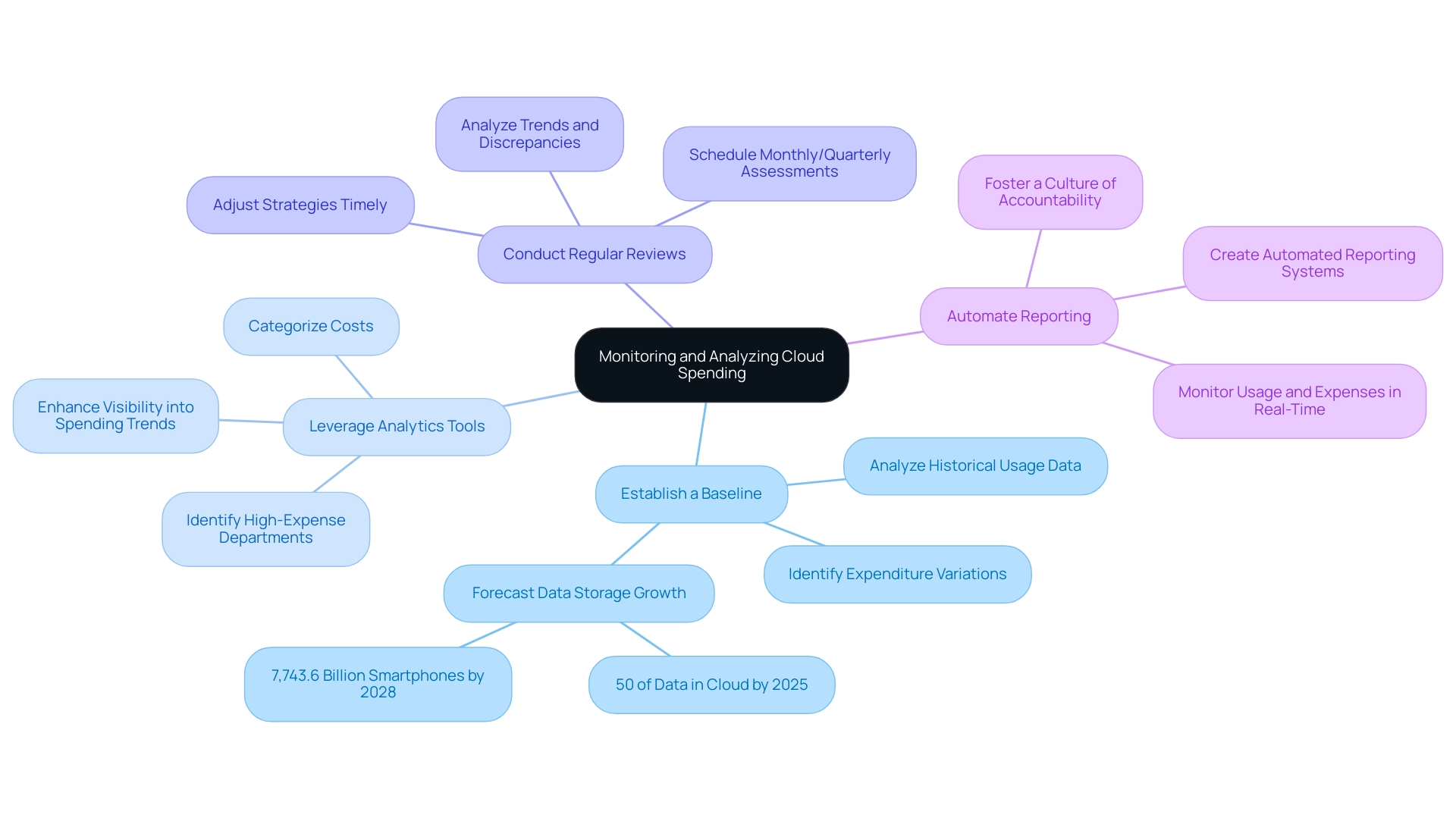
Implementing Cost Governance Policies
To implement effective financial governance policies, IT professionals should take the following steps:
-
Define Roles and Responsibilities: It is essential to clearly delineate who is responsible for monitoring expenses and making decisions regarding resource allocation. This structure fosters accountability, ensuring that team members understand their obligations in managing expenditures effectively.
-
Create Approval Workflows: Developing structured workflows that require approval for significant online expenditures is crucial. Such processes ensure that expenditures align with overarching business objectives and adhere to established budget constraints, minimizing unnecessary financial risk.
-
Educate Teams on Expense Awareness: Conducting training sessions focused on cloud expenditures and the implications of usage patterns is vital for empowering teams to improve cloud cost efficiency. By enhancing financial awareness, entities can foster a culture of responsible expenditure, ultimately minimizing waste and optimizing resource use. This aligns with the findings from the case study 'Obstacles to Confidence,' which emphasizes that investing in training and resources is essential for overcoming barriers to effective compliance management.
-
Regularly Review Policies: Cost governance policies should not be static; they must be reviewed and updated periodically to reflect evolving business needs, technological advancements, and shifting market conditions. This practice ensures that policies remain pertinent and effective in managing expenses.
By establishing robust financial governance practices, organizations can foster a culture of budget-consciousness. This approach not only results in cloud cost efficiency but also aligns with the latest trends in financial governance, as emphasized by Gartner, which forecasts a 50% rise in investment in tools that ensure compliance and safety by 2026. The urgency of implementing these practices is emphasized by the statistic that companies trading on the NASDAQ that have experienced data breaches saw their share prices drop an average of 13% below the Index three years post-incident, reinforcing that effective financial governance is critical for stability.
Therefore, effective financial governance is not merely a financial strategy but a critical component of comprehensive risk management.
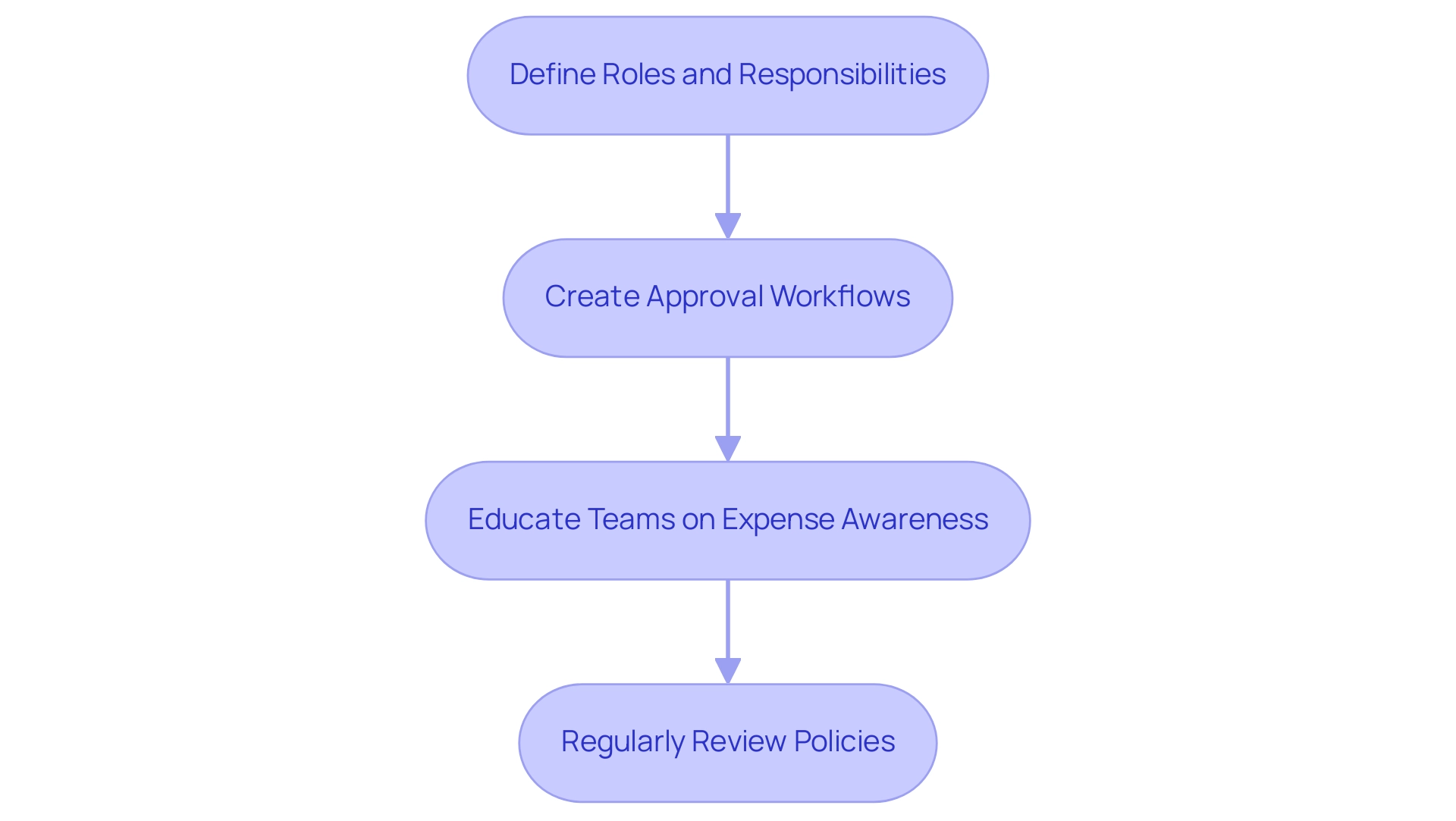
Leveraging Cloud Cost Management Tools
Effective management of expenses and achieving cloud cost efficiency in the digital environment is paramount for IT professionals, especially given that 82% of decision-makers in this area report overseeing spending as their leading challenge. Additionally, 75% of entities have reported a rise in waste associated with online services, with some facing waste reaching 47% of their budget for these services, highlighting the urgency for effective financial management to improve cloud cost efficiency. The U.S. and Western Europe represent 82% of global cloud computing, emphasizing the extent of spending challenges encountered by entities in these regions.
Several robust tools are available to streamline this process:
-
AWS Cost Explorer: This powerful tool allows users to visualize, understand, and manage AWS expenses and usage over time, enabling strategic budgeting and reducing waste. Recent updates have improved its functionalities, establishing it as a vital asset for entities striving for cloud cost efficiency.
-
Azure Spending Management and Billing: Created for overseeing, distributing, and enhancing Azure expenditures, this tool streamlines financial management across different subscriptions, assisting entities in controlling expenses.
-
CloudHealth by VMware: This all-encompassing platform offers insight into expenses, resource utilization, and performance metrics. By enabling data-driven decision-making, CloudHealth empowers entities to achieve cloud cost efficiency in optimizing their computing investments effectively.
-
Spot.io: Concentrating on unutilized capacity within online environments, Spot.io enhances expenses, enabling organizations to realize substantial savings on their workloads without sacrificing performance.
-
CloudCheckr: A versatile management platform, CloudCheckr offers features for expense optimization, security, and compliance, ensuring effective governance in operations.
The effectiveness of these tools can be seen in real-world scenarios, such as Google Cloud's IaaS growth, which has increased by 63.7%, indicating a competitive edge in the market due to effective financial management strategies that promote cloud cost efficiency. By leveraging these tools, IT professionals can automate cost tracking, uncover insights into usage patterns, and make informed decisions that enhance cloud cost efficiency and savings. As cloud computing continues to evolve, tools like these not only support financial prudence but also reinforce the notion that cloud computing is a modern data protection strategy, as noted by industry experts.
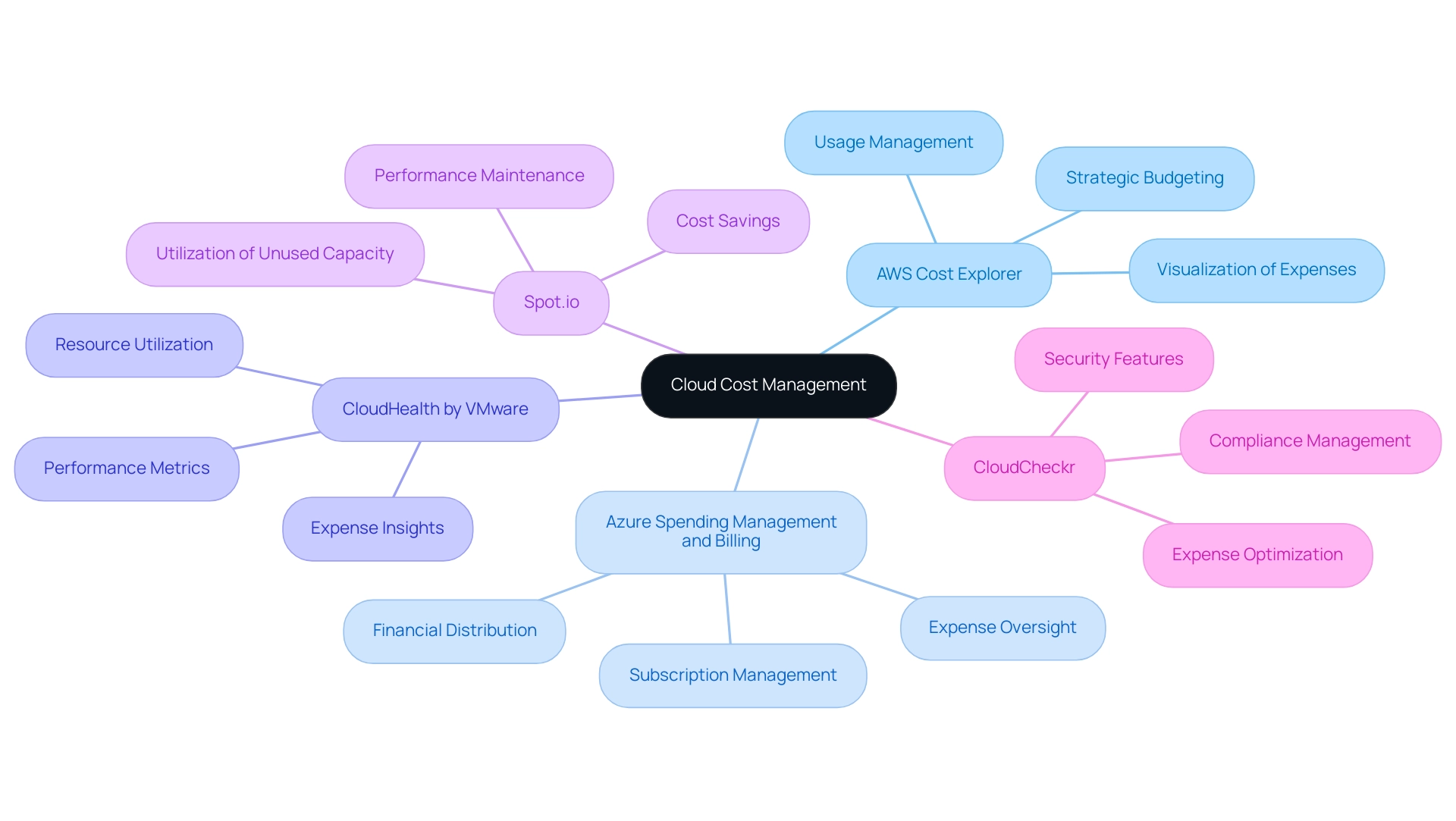
Conclusion
Implementing effective cloud cost management strategies is essential for organizations to optimize their technology investments and mitigate waste. With a significant portion of cloud budgets being squandered, understanding the intricacies of cloud pricing models and utilizing advanced cost management tools has never been more critical. By adopting systematic practices such as:
- Tagging resources
- Leveraging cost management tools
- Regularly auditing resource usage
IT professionals can enhance visibility and accountability, ultimately reducing unnecessary expenditures.
Moreover, establishing robust cost governance policies plays a vital role in fostering a culture of cost-consciousness within organizations. Clearly defined roles, structured approval workflows, and ongoing education about cloud costs empower teams to make informed decisions regarding their cloud usage. Regular reviews of policies ensure that they remain effective in a rapidly changing technological landscape, safeguarding against financial risks and promoting sustainable cloud spending.
As the demand for cloud services continues to grow, organizations must prioritize effective monitoring and analysis of cloud spending. By leveraging analytics tools and establishing automated reporting systems, businesses can gain valuable insights that inform budgeting and resource allocation decisions. Ultimately, the commitment to strategic cloud cost management not only enhances operational efficiency but also positions organizations to leverage the full potential of cloud technologies, driving profitability and competitive advantage in an increasingly digital world.




